What is a pocket prairie?
A pocket prairie is a miniature prairie of an acre or less that features native plants from the endangered coastal prairie ecosystem of Texas. Once established, these parcels of habitat are easy to maintain and provide food and shelter for pollinators and birds, as well as adding beauty to your garden.
Prairies matter. Less than one percent of the original Texas tall grass prairie remains. A healthy tall grass prairie consists of a variety of hundreds of native flowering plants and grasses that support indigenous wildlife adapted to the prairie. Agriculture and urban development have led to the loss of the prairie and a decline or extinction of native plants and wildlife whose survival depended on those plants. Building a pocket prairie in an urban space is one small way to bring the prairie back home and reverse some of its losses.



Build a pocket prairie!
- Identify where you want to create your pocket prairie considering the location and availability of space. It can be as small as a container garden or as large as one acre. Large spaces will require more people to manage than smaller ones.
- Identify the following growing conditions; a) hardiness zone; b) Soil pH; c) soil type: d) soil moisture, and e) sunlight.
- Create a design for your pocket prairie that includes both native plants and grasses. For small prairies, you can start with as few as the nine natives of Texas. Collectively, these nine species have a long bloom cycle, complement each other aesthetically, do not grow too tall, and serve a wide variety of wildlife throughout the year.
- Select the plants based on growing conditions – soil moisture levels, sunlight, and soil drainage, as well as the shape, color, and height of plants and your location.
- Prepare your space by first removing invasive species and then preparing the soil for planting. Invasive species can be removed with organic herbicide, soil solarization, or chemical herbicide, like glyphosate, as a last resort.
- Choose your growing method based on your preference and experience. You can choose from seeds, plants or a combination of both.
- Start growing. Start small and develop a long-range plan. Although native plants require no fertilizer, less water, and less maintenance after becoming established, it is important to notice what works for your garden and what does not.
- Maintenance is important for your pocket prairie not only to survive but to thrive.


